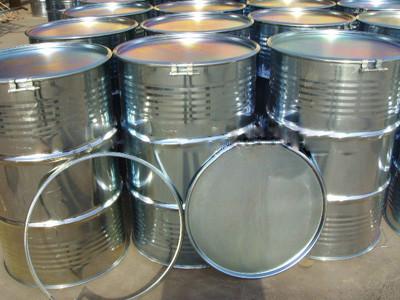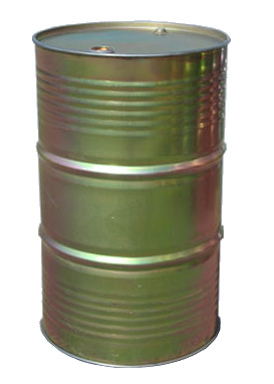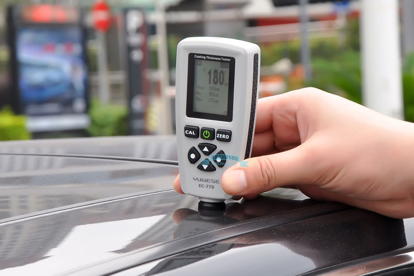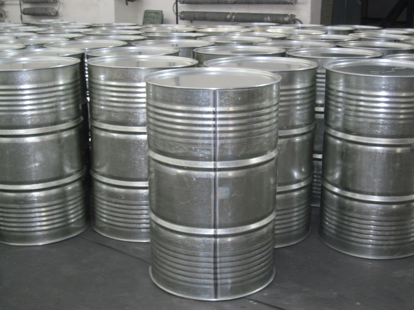Steel drum galvanized layer quality and acceptance requirements
Text / Yang Wenliang

Zinc plating of processed steel drums is often referred to as electroplating drums. Steel drums produced from galvanized steel sheets are often referred to as galvanized drums. Unlike continuous hot-dip galvanizing of galvanized steel sheets, conventional galvanized steel drums have a long zinc immersion time and the coating is not blown, resulting in a thicker zinc layer and a longer outdoor exposed service life. Of course, at present, when the plating is cut on the market, the quality of the plating is not good, but this effect is not achieved.
First, the effect of galvanizing layer on steel drum anti-corrosion
The galvanized layer protects the steel drum much better than the paint or laminate. When galvanizing, diffusion occurs between the zinc and the steel drum to form a zinc-iron intermetallic compound layer, that is, an alloy layer. The alloy layer is metallurgically bonded to the steel drum and zinc, which is stronger than the combination of paint and steel. The galvanized layer exposed to the atmosphere will not fall off for decades and will be completely corroded.
When the galvanized layer has small cracks or damage, zinc will continue to prevent cracks or damaged steel rust in the form of a sacrificial anode, which is the main feature of the galvanized layer superior to other coatings. The hardness of the iron-zinc alloy layer is much higher than that of pure zinc (close to pure iron), so the coating is more resistant to collision and scratching.
Since zinc can be dissolved in acids and bases, the galvanized layer can only be used in general atmospheric and natural water environments. The galvanized layer produces slight electrochemical corrosion when exposed to air and water. The galvanized layer can last for many years in rural and air-clean areas, while the galvanized layer has a shorter durability in industrially contaminated areas and coastal areas. In addition, the thicker the coating, the longer the durability, and the durability is almost proportional to the thickness. The thickness of the plating layer can also be expressed by the mass (g/m2) of zinc per unit area.
Since the coating is consumed in the application, the surface of the coating becomes dull when the iron-zinc alloy layer is gradually exposed. Moreover, the corrosion product contains a small amount of rust, which will cause the surface of the coating to have a local rust color. For the plated parts that are prone to dark coating, there is little or no pure zinc layer on the surface of the coating. This kind of "rust" will appear in the short-term use of the plated parts, but this does not affect its protection, but only affects the appearance.

Second, the quality requirements of the galvanized layer
1, appearance
All steel drum plated parts should be clean and free of damage. Its main surface should be smooth, without nodulation, zinc ash and iron. A very small amount of storage and transportation spots on the surface should not be the reason for rejection.
The purpose of galvanizing is to prevent corrosion rather than decoration, so the quality cannot be judged by aesthetics. After galvanizing, the surface of the steel drum cannot be better than the surface of the original substrate. For example, the surface of the substrate has serious rust resistance, scratch marks, etc. After galvanizing, the original surface state will still be displayed.
Partially exposed iron is also known as leakage plating. The standards all stipulate that iron is unacceptable. When the diameter of the iron is less than 2 mm, the zinc has a sacrificial protective effect and has little effect on the corrosion resistance. GB/T 13912 and the United States and British standards all point out that the plating and inadvertent damage of the coating can be repaired, and there is a clear requirement for the area to be repaired and the thickness of the repair. The material used for repair is a fusion welded low melting point zinc alloy, thermal sprayed zinc or a special zinc-rich coating that is similar in performance to the galvanized layer. The specifics of the repair include materials, pre-treatment, post-treatment, etc., which are described in detail in another US standard developed to repair hot-dip galvanized layers.
Burrs, dripping tumors and excess agglomerates may fall off during production and transportation and can be carefully polished. However, excessive grinding will affect the corrosion resistance, so there is no need to deal with it without hindering the use. Excess zinc or zinc slag at the joint of the weld must be removed to the extent that it does not affect the quality.
Due to defects in the galvanizing process, particulate zinc protrusions sometimes appear on the surface of the zinc layer, and zinc slag particles are inside, which affects the appearance of the coating, but does not affect the corrosion resistance.
In recent years, most of the steel plates are silica-containing killed steels, which are prone to gray matte coating, that is, the surface of the coating has no zinc luster and is gray, and when it is severe, it is dark gray, which is caused by the exposed surface of the iron-zinc alloy layer, against the atmosphere. Corrosion performance has no effect. Changing the galvanizing process and adding nickel to the zinc bath reduces or eliminates the appearance of dark coatings. However, steels with particularly high silicon content, such as low-alloy high-strength steels, cannot be completely eliminated at home and abroad.
White marks appear on the surface of the stacked steel drums, especially in wet weather or after rain, usually called storage of wet rust or white rust. White rust is produced in a specific environment (high moisture, no ventilation), and will gradually disappear once it leaves this environment. Since white rust consumes little zinc layer, the effect on corrosion resistance is small. If you want a galvanized steel drum to maintain its shiny appearance at the beginning, special storage conditions are required. Passivation treatment immediately after galvanizing can avoid or reduce the appearance of these white rust.
2, coating thickness
The thickness of the coating is directly related to the corrosion life and must be guaranteed. GB/T 13912 specifies the minimum thickness of the zinc layer of steel parts, while GB 2694 stipulates that the steel plate with a thickness of less than 2 mm shall have a zinc adhesion of not less than 100 g/m2, ie the thickness of the zinc layer shall not be lower than 14μm. In other countries, the galvanizing standard specifies an average thickness of the zinc layer of the steel sheet of not less than 20 μm. For China's steel drum products, it is generally required to achieve a use requirement with a single-sided thickness of 14 μm.
According to the above criteria, the thickness of the plated part determines the thickness of the coating. The content of GB/T 13912 is finer than that of GB 2694. This is reasonable because thick workpieces are not difficult to obtain thicker coatings, while thin steel plates with smooth surfaces (such as 1mm or less) It is difficult to get a thicker plating. In addition, in terms of the thickness of the coating, there is a certain discrepancy between the national standards, the US standard ASTM A123 requirements are higher, and the Japanese standards JIS H8641 and ISO 1461 requirements are slightly lower, which is to be clear when contracting.

3, adhesion strength
GB/T 13912 stipulates: “The galvanized layer shall have sufficient adhesion strength. When there is no external stress to bend or deform the plated parts, the coating shall not peel off. This test does not stipulate the test method for adhesion strength. When the supply and demand sides can agree that the coating will not peel off and not protrude."
The galvanized layer should have sufficient adhesion to ensure that the galvanized layer will not crack or peel off when the plated part is subjected to collision during normal handling, loading, unloading, transportation and installation. After the plated parts are installed, they are generally not subjected to the violent impact of sharp hard objects, and will not peel off again during use. There was no problem with the hammer test. In recent years, due to the popularity of silicon killed steel, there are many ultra-thick coatings. The iron-zinc alloy layer in the coating tends to be thicker and even occupies almost the entire coating. A considerable part of these coatings may not pass the hammer test, but there is no problem in use. .
The ISO standard only requires "adhesion enough to allow the plated parts to withstand normal handling without the peeling of the coating" and no hammering test is required. In the British and Japanese standards, the test method for adhesion is determined by both the supplier and the buyer, and the hammer test can be used. The American standard has cancelled the hammer test since 1989, and the adhesion test uses a hard knife test. If the zinc layer has good adhesion, the sharp blade or the sharp knife can only be used to shovel the chip without a whole shovel layer. Collapsed to expose the iron matrix. The hard knife test can be applied to all types of galvanized parts, while the hammer test is only suitable when the surface is flat and the workpiece is thick.
4, uniformity
Early foreign standards have specified the use of copper sulfate test to verify the uniformity of the zinc layer. The copper sulfate test is actually a method for determining the thickness of the minimum zinc layer. It is not the difference between the minimum thickness and the maximum thickness. Therefore, the term "uniformity" is not appropriate. Moreover, the dissolution rate of the pure zinc layer and the iron-zinc alloy in the copper sulfate solution is greatly different, so the correspondence between the number of times of immersion and the amount of zinc attached is not very good. In fact, as long as the amount of zinc is up to standard, the number of tests for copper sulfate is much higher than the four times specified in the standard. There is no problem in practicality. The method for specifying the minimum thickness of zinc layer used in GB/T 13912 can be Direct control of the minimum zinc layer thickness.
In the US standards and ISO standards, the copper sulfate test has been eliminated; in the British standard, it is stipulated that the copper sulfate test can be performed when the supply and demand sides agree; in the Japanese standard, one type of plating can not require the zinc layer adhesion and only requires 5 times of copper sulfate test, other provisions of zinc, it is not necessary to do copper sulfate test.
Third, some problems and suggestions during the quality inspection of galvanized layer
The adhesion of the steel plated parts can be checked by the "hard knife test" method. When the hammer test is unqualified and the "hard knife test" is passed, it is not harmful to the use. The solution can be negotiated between the supplier and the buyer.
Some manufacturers and users only pay attention to whether the appearance quality is flat and bright, neglect the thickness of the zinc layer, or even do not test the zinc layer thickness at all, this should not be. Plated parts that are too thin can not guarantee a sufficient durability.
Leakage plating is a defect that directly affects the service life of the plated parts. It is an impermissible defect and cannot be covered with a layer of silver paint.
When galvanizing a steel plate with a particularly high silicon content, the dark matt coating cannot be completely avoided, and both the supplier and the buyer should make it clear in advance.
Plating "white rust" is also a common phenomenon. If the amount of white rust on the coating is large, the thickness of the zinc layer can be measured after wiping off the white rust. As long as the thickness is sufficient, there is no influence on the use.
Fourth, the conclusion
The role of hot-dip galvanizing is mainly anti-corrosion. The coating must be continuous, with sufficient thickness and adhesion. This is the most basic quality requirement, and the good quality coating should have a good appearance, including smooth, smooth and burr-free coating. Tumor and all foreign matter (such as zinc ash, zinc slag, solvent slag or post-plating contaminants, etc.), uniform color and light. To achieve good coating quality, manufacturers must also work hard on galvanizing process technology and management.

Face Makeup,Makeup Eyeshadow,Concealer High Coverage,Liquid Foundation
Suzhou Yimeijia368 Biological Technology Co.,Ltd. , https://www.szymjbeauty.com
